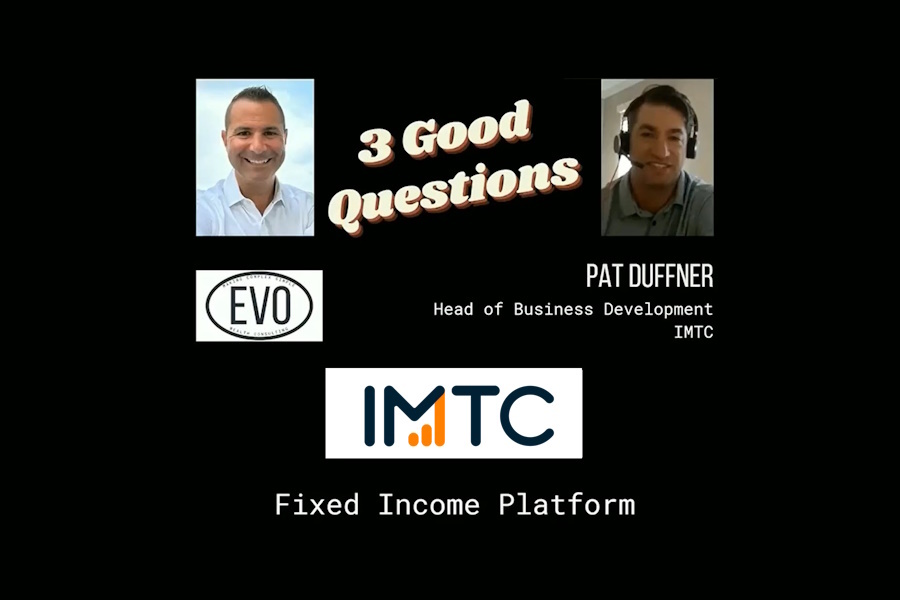The Future of Fixed Income Technology: Evaluating Fixed Income Technology Offerings

In part 1 of this series, we discussed how fixed income asset managers are in need of new technology to stay competitive by providing tools that capture the realities of fixed income management. In addition, it also covers how tech should enable firms to grow assets, customize client solutions at scale, develop new offerings, and win new business. Here, in part 2, we describe the specific capabilities a modern platform should offer and some non-negotiables considerations when investing in new technology.
Given the complexities of fixed income markets, many portfolio managers remain skeptical that any platform can truly understand their needs in this arena. While this view may be somewhat understandable, when such doubts prevent a fixed income management firm from taking advantage of robust technology, that firm runs a significant risk of becoming obsolete.
Fixed income workflows that technology should improve
While there’s a lot of functionality that technology can improve, there are a few key workflows that make the biggest impact on time savings and the ability to improve margins. At a minimum, a modern fixed income platform should offer these five key capabilities today, right now (not as future developments that a vendor says it will address).
- Timely reporting of updated portfolios for start-of-day workflows
When portfolio managers have to wait for reports to be emailed or posted to a network drive to see updated positions and identify portfolios that need attention, the delay puts the firm at a competitive disadvantage. A technology platform should allow managers to generate dynamic dashboards or on-the-fly reports from current portfolio information. When evaluating a fixed income platform, make sure it helps you to identify accounts that need action quickly. - Scalable portfolio optimization that aligns with investment objectives
A fixed income platform should be able to optimize portfolio holdings at scale, recommending specific trades according to relevant criteria. An optimizer should be transparent and capable of suggesting buys from a list of tradable securities to produce executable recommendations. True optimization is more than an allocation tool that distributes a bond across portfolios based on a particular rule. There is a role for that, but it is not an optimizer. It goes without saying that changes suggested by a platform’s optimizer must be consistent with each portfolio’s IPS. Therefore, the platform must have a compliance feature that is integrated with the optimizer. - Equitable trade allocations across accounts
Fee compression is pushing firms to keep costs low. Many are looking to increase economies of scale by lowering account minimums to increase AUM. But small accounts are often neglected as managers focus most of their limited time and resources on larger portfolios. Allocating trades is a prime example of how a capable fixed income technology platform can help firms to manage small accounts equitably. A well-designed platform will automate this process, objectively allocating trades while incorporating compliance checks to prevent investment policy violations. A thoughtfully designed allocation tool also avoids creating small, inefficient portfolio positions that may be difficult to sell in the future. - Embedding pre-trade compliance into investment decisions
Checking portfolios for compliance with investment policies after trades have been executed is, to be blunt, asking for trouble. Violations may result in fines, can be costly to unwind, and cause uncomfortable conversations with clients. When choosing to submit trade orders, portfolio managers are primarily focused on how the trades would affect yield, duration, sector exposures, and so on; checking potential trades against an IPS is a burden. But pre-trade compliance does not have to be manual and time-consuming. A robust technology platform should automate pre-trade compliance checks, incorporating whatever an IPS specifies, and generating alerts that prevent mistakes. - Integrated portfolio and order management processes
When portfolio analyses result in trade decisions, but the portfolio management and order management functions reside on different platforms, a disconnect can occur. A better approach is to use a system that allows portfolio managers to send trade orders directly to a desk or trade blotter with a single click. On a related note, it is not easy for a portfolio manager to track how much cash a given portfolio will have after a trade is executed. Until positions are updated, there is a risk that the manager could commit to subsequent trades that exceed the remaining cash available. A modern fixed income platform that links portfolio and order management should be able to block cash based on proposed trades, preventing managers from overspending cash.
A common thread connecting these features is automation. A robust fixed income technology platform should automate tasks that take too much of a portfolio manager’s time, in a way that captures the realities of fixed income. This improves efficiency, lowers costs, and allows portfolio managers to focus on important things that cannot be automated – such as staying abreast of the market, defining the right portfolio structure, and supporting client relationships.
IMTC’s investment management system offers the ability for fixed income managers to construct and optimize portfolios across accounts, simultaneously. Learn how our platform can help you invest 160x faster.
Five non-negotiable technology advantages
Outside of investment workflows, there are also many considerations firms should assess when investing in new technology. Nowadays, purchasing tech without these benefits, a firm is essentially ceding opportunities to its competitors.
- Cloud technology is a must
Cloud-based platforms offer a wide variety of benefits, the most impactful is that you can future-proof your technology. If a vendor is developing with modern approaches, that means you can access new functionality much faster. Cloud is also very easy to scale and requires little IT resources, that have previously burdened firms. Cloud providers also often offer the most sophisticated cyber security protections due to their level of expertise. - Data and platform integration, providing an interconnected experience
Asset managers need data from multiple custodians, from their own trading system, accounting system, various in-house databases, and so on. A modern technology platform with an open architecture that embraces integration with other systems makes updating data and portfolio positions much easier than was feasible just a few years ago. A fixed income technology vendor should be able to point to recent successful integrations with custodians, sell-side brokers, accounting software, internal databases, and others. - Superior implementation
No matter how user-friendly a system may be, it can only deliver when it is live and the right people in the firm are using it as intended. A vendor should take time to understand your business before starting the implementation process so that the technological advantages offered by the cloud and integration capabilities are fully realized. Note that implementation goes beyond the technical work of connecting the platform from a technology standpoint. It also means hands-on training for your team. If people do not know how the system can save them time and help them accomplish their goals, even the best technology platform cannot deliver on its potential. - Better client support and training
Older platforms are restricted by an architecture that was not made for modern technology tools. On older systems, daily tasks often require support from the vendor just to produce basic analyses. A modern platform with an intuitive user interface allows clients to easily accomplish tasks without calling the vendor for help. This allows vendors to focus their support resources on training and helping clients to use new functionality or untapped features to improve workflows and achieve business goals. We also note that legacy platforms typically support multiple versions of their software because clients resist migrating to the newest version. This dilutes client support resources, slowing responses. Modern, cloud-based platforms eliminate this resource tug-of-war by pushing out updates to all users – no “migration headaches.” - A partnership model
When upgrading its portfolio management platform, an asset management firm can build, buy, or partner. Building in-house can be tempting for larger firms who want a system tailored to the firm’s needs. However, development often takes years longer than expected and since it is difficult to attract and retain developers, high turnover makes system maintenance challenging. Buying a mature system that offers most of what a firm needs today seems like a low-risk alternative. However, needs change and a platform may not assign a high priority to adding features a firm needs as it evolves. A newer, tech-savvy platform vendor is able to offer a partnership model that embraces customization. A modern platform built by a tech-savvy firm that is hungry to grow leverages the benefits of new technology to benefit clients in a win-win partnership, where clients help to direct the vendor’s development roadmap.
Key takeaways on new technology investments
In the face of consolidation and fierce competition, fixed income asset management firms must leverage what technology offers. Modern technology helps firms to accomplish essential tasks faster, more easily, and far more efficiently. Firms that welcome new technology will reap the benefits; those that do not will struggle to stay competitive.
The advantages to using a modern technology platform for fixed income management are not always obvious. A technology vendor with the right mindset can be a true partner in helping fixed income asset management firms to grow, showing them how to use new and better technologies to keep up with whatever comes next.
———————————-
How does IMTC address all of these considerations on our platform?
IMTC delivers all of these workflow improvements through a unique combination of fixed income and technology expertise. Our entire platform enables PMs to analyze and make decisions across multiple portfolios, simultaneously.
- Identify portfolios in need: Our platform allows fixed income managers to quickly find portfolios that need attention based on any combination of 250+ criteria, including large cash holding, ratings changes, target drift, etc., in one simple dashboard.
- Portfolio optimization: Our optimizer provides CUSIP-level buy and sell recommendations that move portfolios towards a user-defined investment objective with compliance rules embedded into suggestions.
- Bond allocator: Our bond allocation tool equitably distribute trades across portfolios using a chosen methodology (including pro-rata and waterfall approaches), ensuring fair and equitable treatment across accounts, regardless of size.
- Pre-trade compliance: IMTC shows the portfolio-level impact of trades under consideration, giving managers critical insights and ensuring the trades adhere to investment policy guidelines and targets.
- Integrated order management: By connecting directly to trading desks, IMTC’s platform helps portfolio managers to avoid overspending by blocking cash until trades are either executed or canceled.
Additionally, with our cloud-based platform and advanced development techniques, we can integrate into any third-party platform or data source. We ensure technology is effective through consultative implementation plans and strong client service. And we always partner with our clients, building functionality that’s essential to their workflow and taking their feedback into consideration for our product roadmap.
Read the full guide on The Future of Fixed Income Technology for more insights on this topic.
.





